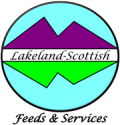Contents
- The objectives of the sheep enterprise
- The concepts of sheep nutrition
- Feed intake
- Energy
- Protein
- Minerals & Vitamins
- Water
- Popular husbandry systems
Water is probably the most fundamental nutrient in any diet and yet it is also the most neglected of the elements of dietary construction.
We all know that without water we would die, and we all know that thirst is a very strong instinct that lets us know that it is time to top up our fluid levels. Exactly the same is true of the ruminant.
Ruminants have a huge capacity for water compared to humans, this is because the rumen is necessarily a wet environment, necessary for the rumen micro-flora to flourish and, consequently, to allow the fermentation process to take place.
The animal can obtain its water from three sources:
- Water that is present in food.
- Water that is drunk.
- Water that is released from the metabolism of fat, carbohydrate, and protein.
The calculated requirement for water ignores the water released by metabolism.
Water intakes are directly linked to body weight, dry matter intake, stage of lactation, stage of pregnancy, the number of embryos being carried, environmental factors, salt content of the diet.
- Body weight is the main factor which determines dry matter intake. Equally, it is the main factor which determines water intake of non-lactating animals.
- Dry matter intake is the measure from which water requirements are expressed. (See Table 8)
- The stage of lactation of the female animal is also a major influence on water requirements since about 19% of the ewes milk, and 13% of the cows milk are solids, and the rest is water.
- Pregnancy requirements for water understandably increase, nearer to calving or lambing, and as the number of calves or lambs increase.
- Individual animals will vary their intakes enormously from the average. The daily fluctuation of individuals is also very significant.
- Environmental factors include temperature, rainfall, and relative humidity. Hot weather induces panting and this increases water loss and increases water consumption.
See table 8
High rainfall frequently negates the animals need to top up from drinking troughs. Hot and humid conditions may lower both feed and water intakes together.
- Salt is one of the major mineral elements and whilst dietary requirements are relatively small, sometimes the addition of salt to a TMR or a free access salt lick may increase overall palatability and dry matter intake of a diet.
- Water temperature should be allowed to adjust to ambient temperature. In hot conditions ie 30 degrees C water at ambient temperature will be drunk mor readily than cold water. Although the ARC does not state a particular minimum temperature, they do state that the water should not be frozen! As a guideline a minimum of 4 degrees is probably a more practical guideline.
- Restricting access to water for more than 12 hours will reduce milk yield. Most cows will drink 2 to 5 times daily, there is no reason to believe that sheep are any different. In some beef systems withdrawal of water for 24 hours prior to marketing may result in a visual tightening of the gut, whilst this is probably not a particularly healthy tactic, it does seem to have a fairly positive effect on the market price of the animal; it also firms up the faecal output.
- pH is an important factor. Generally, it is very rare that the tolerance of pH 6 to 9 is breached.
- Cattle and sheep should avoid drinking water containing toxins, including those emitted by Blue Green Algae.
Table 8 Water Allowances for Cattle, Sheep and Cows
| Kg water/Kg DM Intake | |||
| Environmental temperature (degrees C) | |||
| <16 | 16 – 20 | >20 | |
| Cattle | |||
| Calves to 6 weeks | 7.0 | 8.0 | 9.0 |
| Cattle, growing, adult. | 5.4 | 6.1 | 7.0 |
| Sheep | |||
| Lambs to 4 weeks | 4.0 | 5.0 | 6.0 |
| Growing or adult sheep | 2.0 | 2.5 | 3.0 |
| Ewes mid pregnancy (twins) | 3.3 | 4.1 | 4.9 |
| Ewes late pregnancy (twins) | 4.4 | 5.5 | 6.6 |
| Ewes lactating 0 to 4 weeks | 4.0 | 5.0 | 6.0 |
| Ewes lactating 4 to 12 weeks | 3.0 | 3.7 | 4.5 |
| Dairy Cows (600 Kg) | |||
| Milk Yield per Day (litres) | |||
| 10 | 81 | 92 | 105 |
| 20 | 92 | 104 | 119 |
| 30 | 103 | 116 | 133 |
| 40 | 113 | 128 | 147 |
